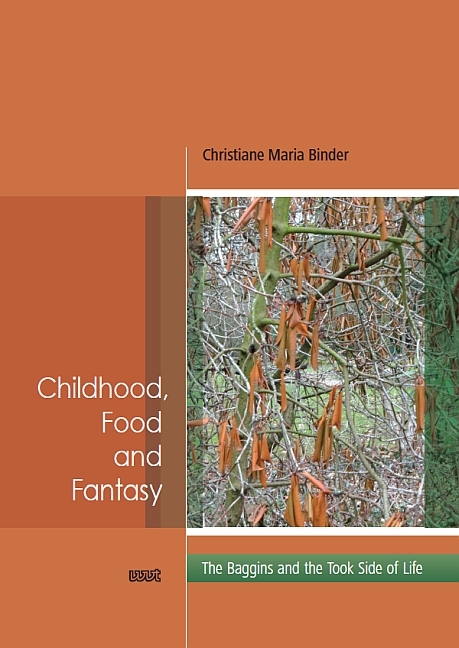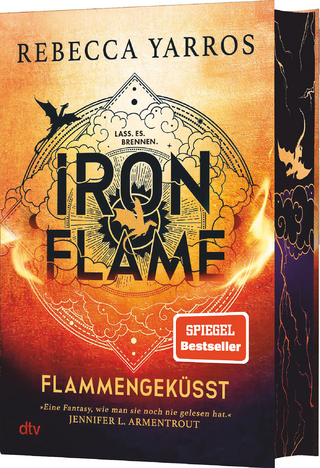Childhood, Food and Fantasy
WVT Wissenschaftlicher Verlag Trier
978-3-86821-751-3 (ISBN)
The fantasies are read against the background of the contemporary children's culture, especially the food culture of the time. These decades were crucial for the emergence of new conceptions of childhood and the emancipation of Children's Literature, especially fantasy for children. The major concern of this study is thus the socio-cultural significance of food and meals in representations of childhood in Victorian, Edwardian and inter-war fantasy. Food is treated here as a cultural metaphor. The study of its realistic and fantastic functions contributes to an exploration of the poetics and politics of food. Moreover, it allows us a fuller look into the emergence and diversification of the generic paradigm of fantasy, one of the most fascinating and complex types of texts.
Contents
1. Introduction 1
2. Childhood 8
2.1 Changes in childhood and childhood concepts 8
2.2 The emergence of an attractive children's culture of its own 12
2.2.1 Toys, games and pastimes 12
2.2.2 Books, magazines and comics 17
2.2.3 Clothes and fashion 19
2.2.4 A holiday and leisure time culture 22
2.2.5 The nursery 35
2.3 British upper- and upper-middle-class lifestyles 37
2.3.1 Edwardian housing and its consequences 37
2.3.2 Special servant-children relationships 44
2.3.3 Different concepts of parent-child interaction 50
3. Food: reasons for its importance in Victorian, Edwardianand inter-war fantasy 52
3.1 Food as a social marker 53
3.2 Changes in food production, storage and preparation 57
3.3 Eating socialization in Victorian and Edwardian times 61
3.3.1 Strict mealtimes 61
3.3.2 Children's consumer status and the training of rigid table manners 63
3.3.3 Psychological effects of the pressure centering around meals 68
3.4 Changes in food culture and eating socialization 72
3.4.1 Today's food culture 72
3.4.2 Today's eating socialization 74
3.5 The interaction of history/reality and literature 76
4. Fantasy: fairy tale, fantasy and child readers 79
4.1 Different types of fantasy and diverse modes of experience 88
4.2 Further attempts to (re-)define fantasy: the emergence of fantasywithin children's literature 94
5. "It's always tea-time": food as a cultural metaphor in Lewis Carroll'sAlice's Adventures in Wonderland and Through the Looking-Glass 124
5.1 Food functions 129
5.1.1 The interconnectedness of realistic and fantastic uses of food 129
5.1.2 Reversed logic 133
5.1.3 Food absurdities as nonsense 134
5..4 Poetry 156
5.1.5 Nonsense poems and songs 161
5.1.6 Dream, reality and fantasy 172
5.1.7 Time, chronology, logic and memory 178
5.2 Conclusion 182
6. "I want my tea," "We must have dinner, anyway":food as a cultural metaphor in Edith Nesbit's Five Children and It 187
6.1 Realism and fantasy, metafiction, adult and child readers, credibilityand suspense of disbelief 188
6.2 Food functions 201
6.2.1 The interconnectedness of realistic and fantastic uses of food 201
6.2.2 Meals interspersed with adventures or adventures interspersed with meals 213
6.2.3 Meals as dramaturgy: the pressure of mealtimes 219
6.2.4 Moral/spiritual encouragement, sensuous enjoyment andmoral/legal considerations 222
6.3 Conclusion 227
7. Eat and drink in style and enjoy it: food as a cultural metaphorin Kenneth Grahame's The Wind in the Willows 229
7.1 Food functions 241
7.1.1 Identity and lifestyle 241
7.1.2 Eating and drinking as an integral part of action and characterization 253
7.1.3 Atmosphere, sensuousness, domestic comfort, personal well-beingand security 269
7.1.4 Moral/spiritual encouragement and affirmation of one's lifestylethrough physical nourishment 274
7.1.5 The role and functions of poetry and songs 280
7.2 Conclusion 287
8. To eat or to be eaten: food as a cultural metaphorin J.R.R. Tolkien's The Hobbit or There and Back Again 289
8.1 Food functions 293
8.1.1 Identity and lifestyle 293
8.1.2 Eating and drinking as an integral part of action and characterization 305
8.1.3 Food and meals as chronotopes 319
8.1.4 Physical nourishment and moral/spiritual encouragementas the foundation of stability, security and peace 328
8.1.5 To eat or to be eaten: the eating hierarchy 332
8.1.6 Stories, tales, poems, songs and music 367
8.2 Conclusion 374
9. Ge
| Erscheinungsdatum | 14.04.2018 |
|---|---|
| Verlagsort | Trier |
| Sprache | englisch |
| Maße | 148 x 210 mm |
| Gewicht | 627 g |
| Themenwelt | Literatur ► Fantasy / Science Fiction ► Fantasy |
| Geisteswissenschaften ► Sprach- / Literaturwissenschaft ► Anglistik / Amerikanistik | |
| Schlagworte | Alice's Adventures in Wonderland • British fantasy • Caroll, Lewis • children's culture • Children's literature • five children and it • Grahame, Kenneth • Nesbit, Edith • The Hobbit or There and Back Again • The Wind in the Willows • Through the Looking-Glass • Tolkien, J. R. R. |
| ISBN-10 | 3-86821-751-7 / 3868217517 |
| ISBN-13 | 978-3-86821-751-3 / 9783868217513 |
| Zustand | Neuware |
| Haben Sie eine Frage zum Produkt? |
aus dem Bereich




